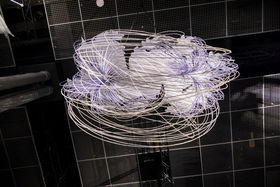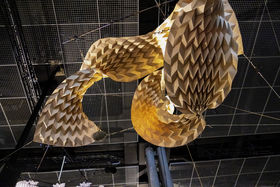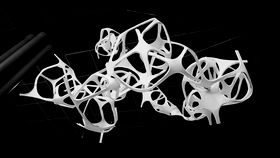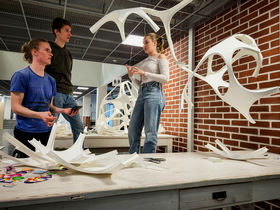Kurotuksia - Higher Powers student exhibition blending math and arts opened at Heureka
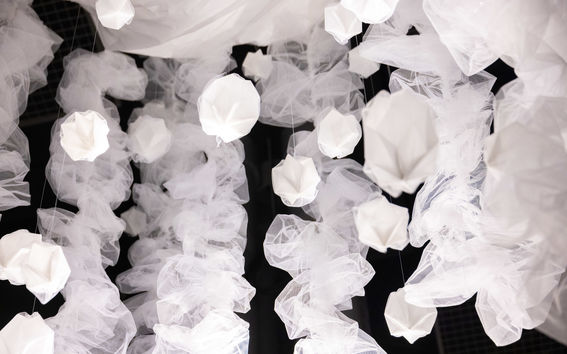
Aalto University's interdisciplinary course "Crystal Flowers in Halls of Mirrors: Mathematics meets Art and Architecture" culminates in the exhibition Kurotuksia - Higher Powers, which opens today at Heureka, the Finnish Science Centre. It celebrates a decade of promoting interdisciplinary interaction in the course and is the second time the course has an exhibition at Heureka.
‘Folding, origami, kirigami, cutting, crumpling and other methods that allow for the transformation of flat material into three-dimensional space are featured in the course and in the exhibition. We also wanted to highlight harmonious colors in the exhibition, such as the Greyscale Rainbows made under the guidance of the Textile Artist of the Year, Laura Isoniemi,’ says Kirsi Peltonen, a senior lecturer in mathematics who is responsible for the course.
The students come from different schools and different stages of their studies, and students from the University of Helsinki also took part in the course. The exhibition is located near the ceiling of Heureka, at a height of about three meters.
‘The exhibition plays with geometries, symmetries and organic shapes. The previous Crystal Flowers exhibition at Heureka six years ago caused sighs of beauty in the viewers. It was precisely for the sake of beauty that we decided to extend the exhibition for a few extra months,’ says Mikko Myllykoski, director of Heureka.
Myllykoski’s comments are echoed by Eija Myötyri, who works at Heureka and says that mathematics is the underlying structure of everything.
‘Mathematics is shapes, among other things. You can visualise it, and it's very beautiful to look at.’
Slime moulds and fragility
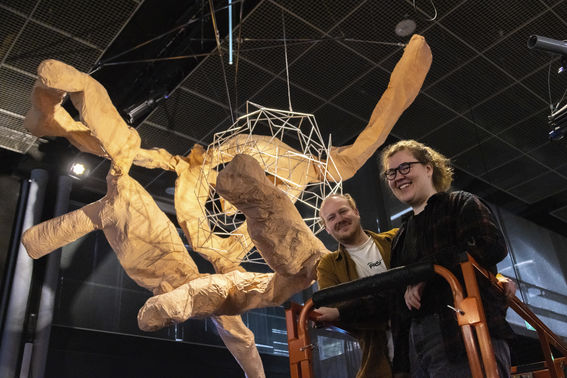
The exhibition consists of eight showpieces. Ballad of Two Automata is a sculpture that includes two model simulations of slime moulds. It was designed and created by Poonam Chawda, Petri Juntunen, Emma Kamutta and Jonas Tjepkema. They were inspired by the slime mould Physarum polycephalus, which has also been used to model the Tokyo railway network.
According to Kamutta, the team was interested in the interaction between the two creatures in a perpetual motion space.
‘In the Ballad of the two automata, there are two strange creatures that you don't know whether they are friends or enemies, sad or happy,’ says Tjepkema, who thinks that teamwork was the main takeaway from the course. He says that producing the sculpture felt at times like working on an assembly line in a factory, along with the other team members.
‘It was interesting to learn how to communicate with other students from different disciplines in an understandable way,’ says Kamutta, who was a student at the University of Helsinki when she took the course. It was through the course that she found a summer job at Aalto and, at the same time, a topic and a supervisor for her final thesis.
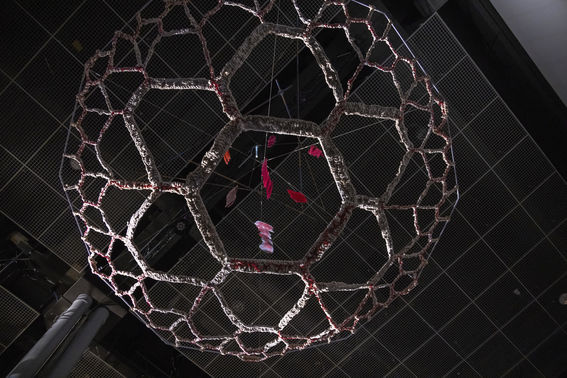
Olio, a work by Hitomi Asaka, Nina Jokiaho, Jason Selvarajan and Henrik Kankaanpää, was also inspired by slime mould.
‘Olio is built on horror, otherness, and indeterminacy. We reflected on strangeness, alienation, and disgust – as decomposers are easily associated with decay, disintegration, and death,’ says Jokiaho, who explored interdisciplinary collaboration from a visual arts education perspective during the course.
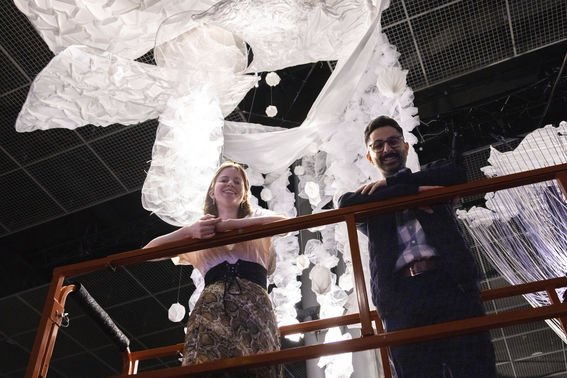
The Ocean’s Curtain is inspired by the way the surface of water looks when viewed from the seabed. The group of students included Helena Hartman, Seyed Alireza Fatemi Jahromi, Meri Aho, Xiao Mou and Irmuun Tuguldur.
‘The process of material selection and working with the materials was new to me. It’s a different approach. I’ve done the whole math and arts minor, and for me, a science student, it felt like a gateway to arts,’ says Seyed Alireza Fatemi Jahromi.
‘I applied to Aalto to study mathematics precisely because of the arts courses. During the course, I learned to trust the creative process and to think in a new way: for example, we went to Oodi to sew without a plan. It was very inspiring,’ says Aho.
See also behind the scenes photos and blog post of building the Curves through folding paper art origami by Susanna Oksanen. Other team members are Joel Knippare, Okko Riekki and Venja Salminiitty.
Kurotuksia - Higher Powers exhibition is open from 6 June to 19 November during Heureka's opening hours.
Contact information:
Kirsi Peltonen
Senior university lecturer
Aalto University
kirsi.peltonen@aalto.fi
Tel. +358 50 5747 006
Mikko Myllykoski
CEO
Heureka
mikko.myllykoski@heureka.fi
Tel. +358 40 9015 244
Read more news
Growing Materials, Growing Ideas: Inside the BioMaker Studio
At Aalto University’s BioMaker Studio, initiated by Ena Naito, students and researchers experiment with living materials, from algae to mycelium, creating an open, interdisciplinary space where design, biology, and collaboration grow together.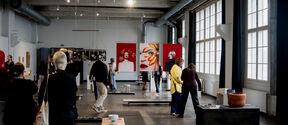
The year in Review: What happened in 2025?
A recap of the milestones of the Master in Contemporary Design in 2025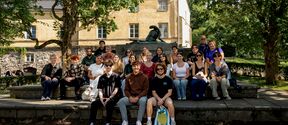
“This hands-on approach is the absolute best way to learn” – Loyola University and Aalto University partnered for the sixth time
Isabel Towghi shares her experience from Aalto University Summer School.







